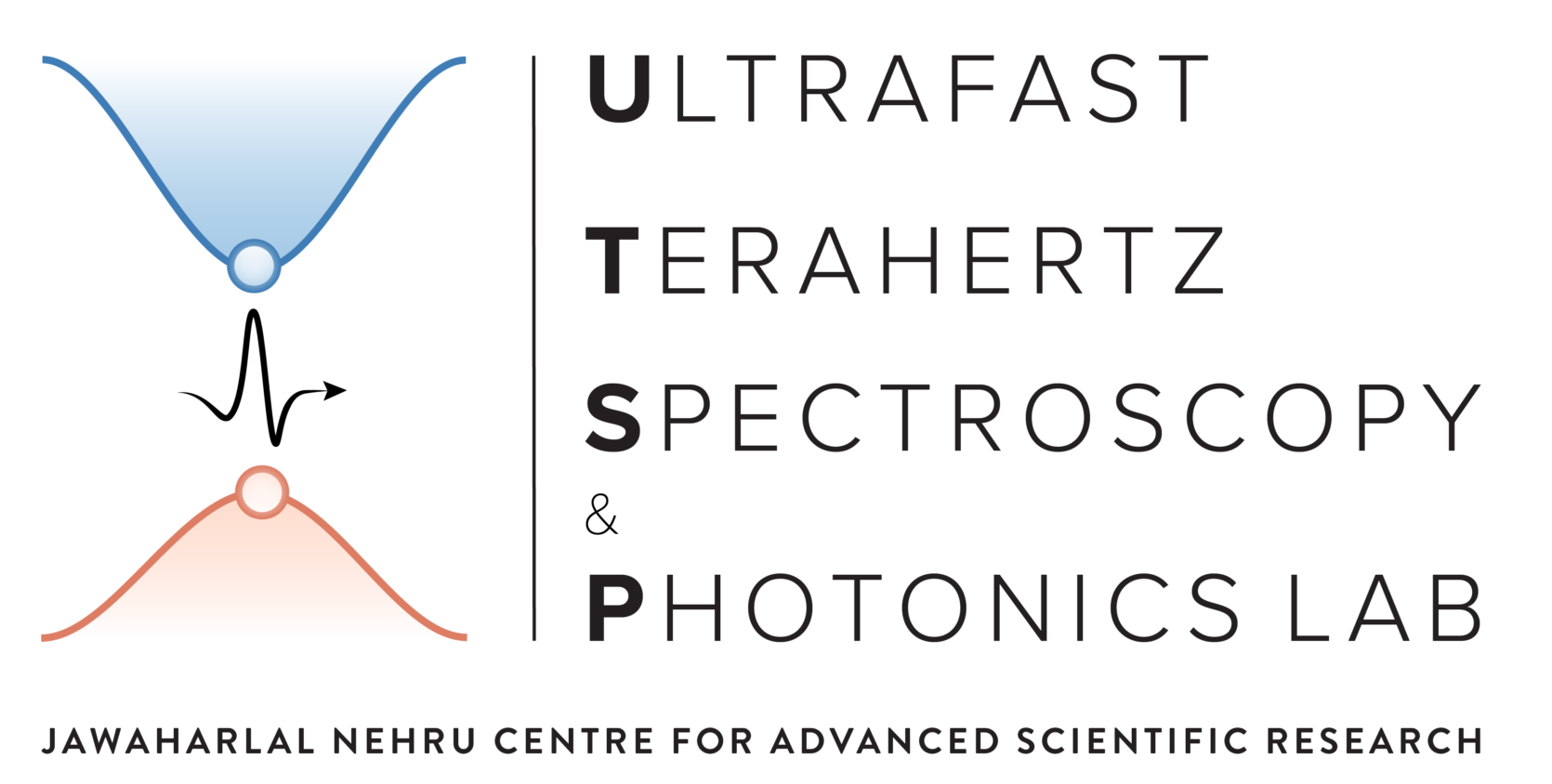Terahertz photonics
Uncover the mysteries of quantum interactions in groundbreaking research on ultrafast physics, terahertz spintronics, and meta-photonics—shaping the future of photonics technology.
Integrated terahertz photonics
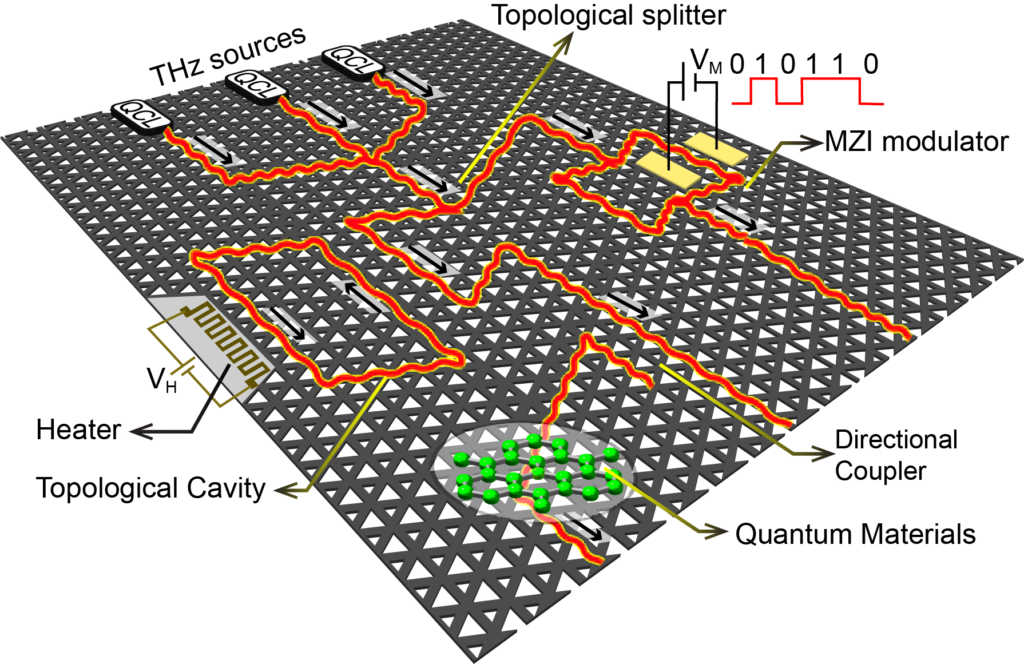
The advancement of terahertz integrated circuits holds crucial significance in realizing sixth-generation (6G) wireless communication, high-speed on-chip interconnects, high-resolution imaging, on-chip biosensors, and fingerprint chemical detection. However, current on-chip terahertz devices face challenges such as reflection and scattering losses at sharp bends or defects. Recently discovered topological phases of light impart extraordinary properties to photonics devices, including reflectionless propagation and robustness against impurities or defects. This robustness is essential for terahertz integrated devices. Harnessing the resilience of topological edge states in conjunction with a low-loss silicon platform is poised to deliver outstanding performance in terahertz devices, marking a breakthrough in terahertz integrated circuits and high-speed interconnects.
We aim to develop various terahertz functional devices enabled by a photonic topological insulator. This innovation is expected to pave the way for developing emerging terahertz technologies, essential for advancing the vision of 6G communication.
Ultrafast photonics
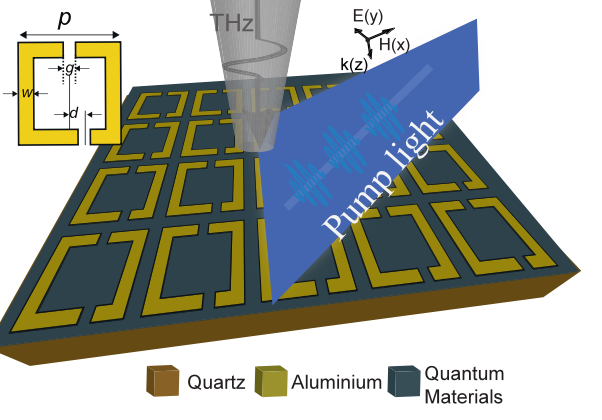
Controlling the electromagnetic waves at ultrafast time scale is paramount importance for various applications, including ultra-high-speed switches, routers, high harmonic generation and many more. To achieve this, we aim to integrate metamaterial with emerging quantum materials (see the above figure). Metamaterial brings flexibility in controlling the amplitude, polarization, phase and frequency of the electromagnetic waves, while quantum material offers unprecedented control over the features of metamaterials at ultrafast timescales (from picosecond to femtosecond).
Sensing and Communication
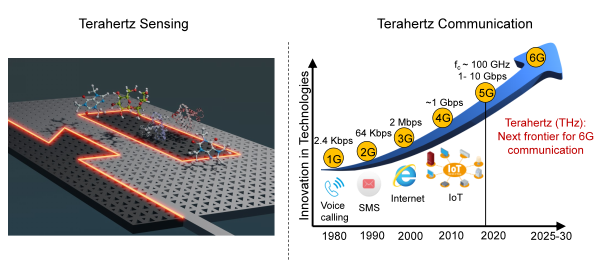
The forthcoming wireless technologies, commonly known as the sixth generation (6G), are envisioned to provide extraordinary communication capacity and specifically revolutionize network sensing capabilities. The terahertz (THz) band stands out as a potential facilitator for these advancements, given its vast untapped frequency bands and the superior spatial resolution made possible by both short wavelengths and broad bandwidths.
Moreover, the THz region holds significant promise for the development of novel sensing modalities, boasting a distinctive absorption band for various materials and molecules, spanning from explosives to bio-molecules like DNA and proteins. However, unlocking the untapped potential of THz waves for sensing and communication requires the imperative development of THz sensors with high spectral resolution along with the advancement of THz functional devices, including high-speed modulators, beam formers, and antennas crucial for communication.
Our group is dedicated to advancing ultra-sensitive and miniaturized THz sensors and functional components by leveraging the principles of topological photonics and metamaterials.
Meta-photonics
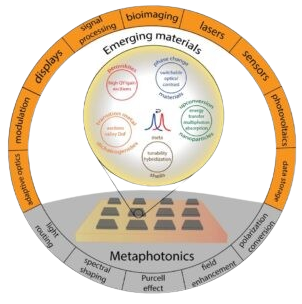
Light manifests as an electromagnetic wave resulting from the reciprocal interaction of time-varying electric and magnetic fields. The characteristics of these waves are contingent upon the type and composition of the medium through which they propagate. Metaphotonics explores novel optical behaviors that transcend conventional optical properties by establishing a new domain using diverse artificial nanostructures.
The prefix “Meta,” derived from Greek, signifies “beyond” in the context of metaphotonics, denoting artificial attributes not naturally occurring. The integration of these artificial structures can lead to the emergence of unexpected and advantageous phenomena that differ from those observed in naturally existing materials. By offering control over various optical properties, including amplitude, phase, polarization, and wavelength at a sub-wavelength scale, metaphotonics holds potential applications in diverse fields such as sensors, displays, communication, energy, and biotechnology.
